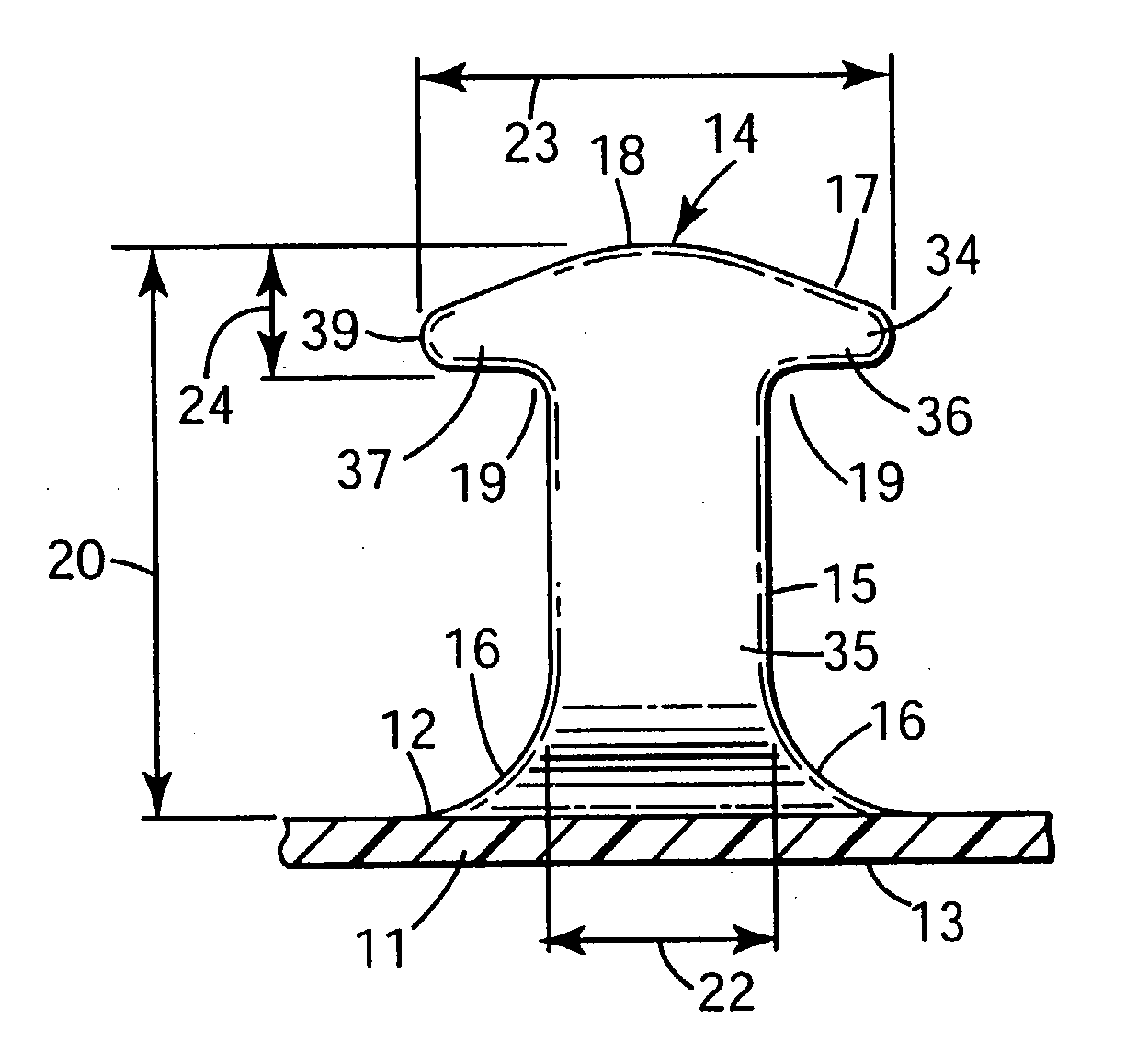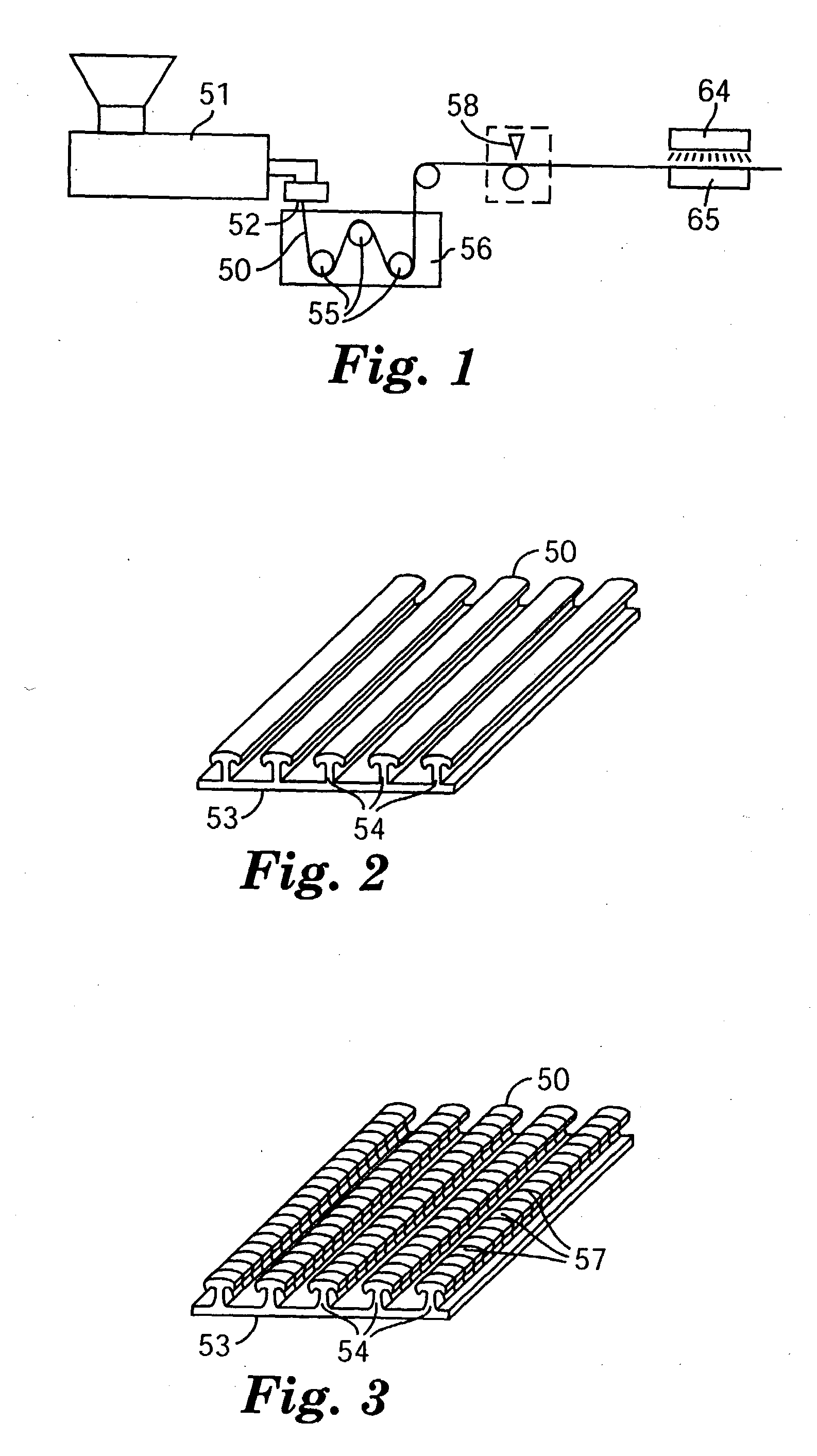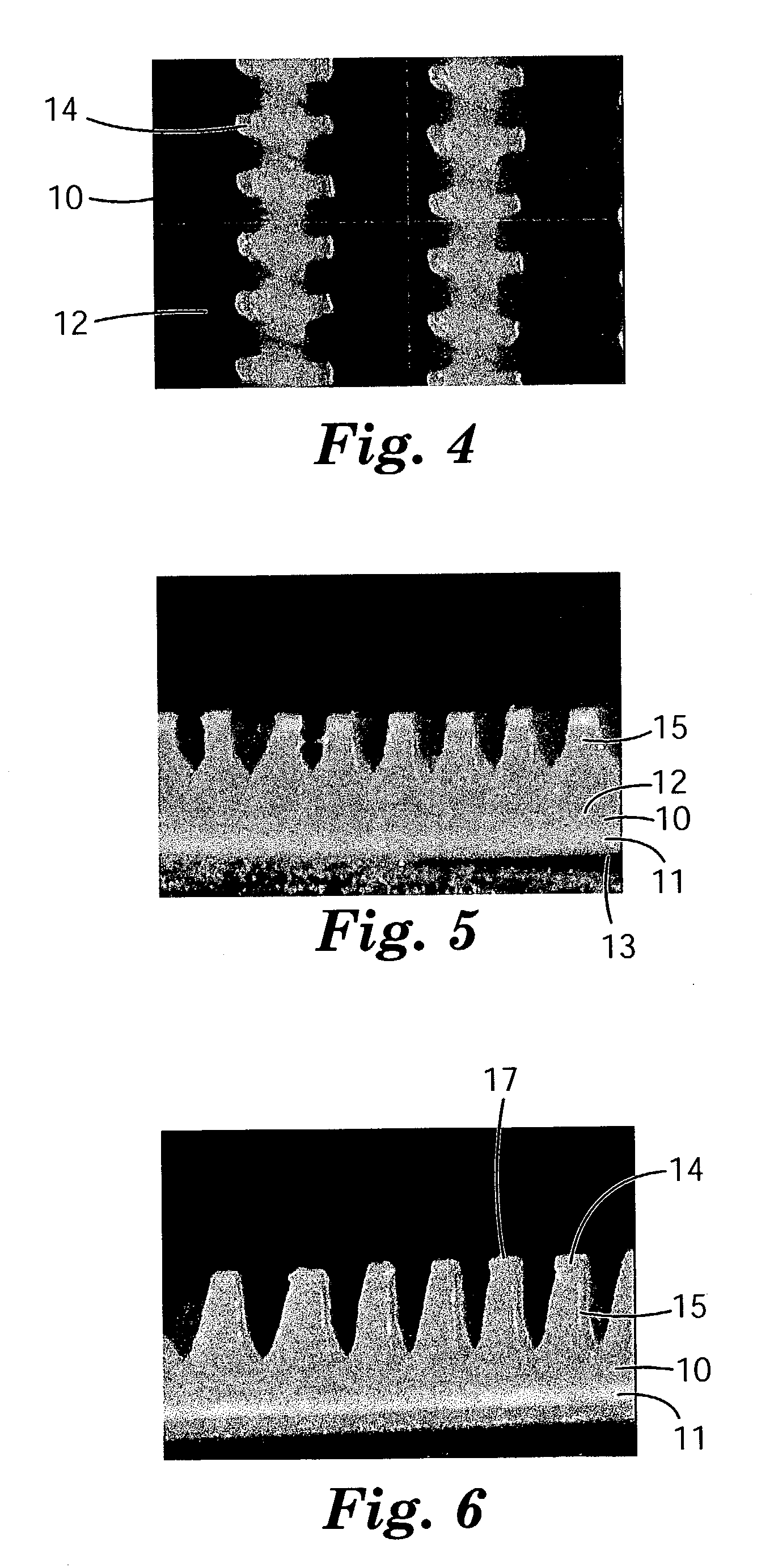Heat treated high density structures
a high density, heat treatment technology, applied in the direction of snap fasteners, buckles, manufacturing tools, etc., can solve the problems of limiting the individual hook, limiting the strength of the engaging head portion of the hook element, and the density, so as to reduce the thickness of the projection or the hook member, the molecular orientation of the cut portion decreases, and the width of the treated portion generally increases
- Summary
- Abstract
- Description
- Claims
- Application Information
AI Technical Summary
Benefits of technology
Problems solved by technology
Method used
Image
Examples
example 1
[0044] The precursor hook web described above was subjected to a non-contact heat treatment on the hook side of the web by passing said web underneath a perforated metal plate at a speed of 2.4 meter / min producing hook members having a profile substantially as shown in FIG. 7. Hot air at a temperature of approximately 185.degree. C., provided by a 15 kW electric heater, was blown through the perforations in the metal plate onto the hook side of the web at a velocity of approximately 3350 meter / min. The hooks were approximately 46 cm from the perforated plate. The smooth base film side of the web was supported on a chill roll at approximately 149.degree. C. After heat treatment the web was cooled by passing the web over a chill roll maintained at 11.degree. C. The dimensions of the resulting heat-treated hook material are shown in Table 1 below.
example 2
[0045] The precursor hook web described above was subjected to a non-contact heat treatment on the hook side of the web using the following procedure. A 13 cm.times.43 cm piece of web was placed onto a 13 cm.times.43 cm steel plate (1.3 cm thick), hook-side up, and edge clamped to prevent the web from shrinking. Hot air from a Master brand hot air gun (14.5 amp) at 400.degree. C. was blown vertically down onto the web by passing the air gun uniformly over the web for about 20 seconds. The hot air gun vent was set at 50%. The dimensions of the resulting heat-treated hook material are shown in Table 1 below.
1TABLE 1 Hook Hooks / cm Hook Hook Arm Hook Thickness in a row in Hook width Height Droop Thickness at 300 .mu.m Machine Material (.mu.m) (.mu.m) (.mu.m) Top (.mu.m) (.mu.m) Direction Precursor 384 521 74 349 324 30 C1 374 494 69 319 324 8 1 508 594 130 124 203 30 2 553 616 156 120 164 30
PUM
| Property | Measurement | Unit |
|---|---|---|
| angle | aaaaa | aaaaa |
| shrinkage | aaaaa | aaaaa |
| thickness | aaaaa | aaaaa |
Abstract
Description
Claims
Application Information
 Login to View More
Login to View More - R&D
- Intellectual Property
- Life Sciences
- Materials
- Tech Scout
- Unparalleled Data Quality
- Higher Quality Content
- 60% Fewer Hallucinations
Browse by: Latest US Patents, China's latest patents, Technical Efficacy Thesaurus, Application Domain, Technology Topic, Popular Technical Reports.
© 2025 PatSnap. All rights reserved.Legal|Privacy policy|Modern Slavery Act Transparency Statement|Sitemap|About US| Contact US: help@patsnap.com



